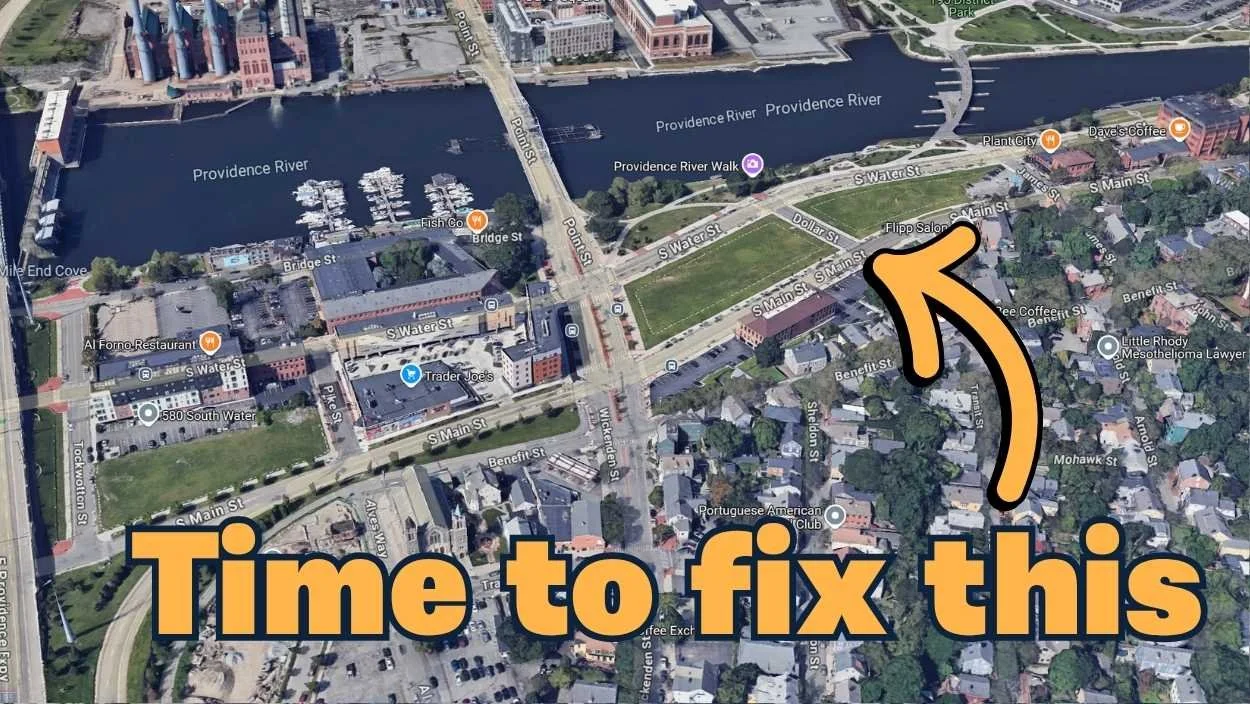Re-Imagining the Re-Thinking I-94 Proposals
This article was originally published in streets.mn. It is shared here, in slightly different format, with permission.
Cheonggyecheon is a recreation space in the place of a former highway in Seoul. Some advocates envisioned a similar future for I-94, but the release of MNDOT's proposals for the highway has dimmed those hopes. (Source: Jiyoun.)
The Minnesota Department of Transportation (MnDOT) recently released its proposals for how it rethought Interstate 94. The proposals range from just barely acceptable to seriously concerning. I responded to the survey they put out about their options, but I am still troubled by having looked at those visions of the future they laid out.
Here, I want to share a few ideas that start at the first boulevard-ish proposal they have and make some proposals in the other direction, to broaden the spectrum of possibilities and add some hope to how we plan for the future together.
(Source: For Construction Pros.)
Gravel Road
The cheapest no-build option. This option calls for gravel to be placed over the existing infrastructure. Ongoing maintenance costs would be significantly lower than they are at present. Perks include lower speeds and fewer cars driving through the city, even though this option maintains access for motor vehicles. Bikes and pedestrians could also use the area, since it would no longer be a limited-access road. On- and off-ramps would be determined in future planning. Drawbacks would include dust, but considering that this is in a trench, the impacts on neighbors should be minimal or similar to what they are currently experiencing. Future research could go into spraying down the trench with greywater when we are in a dry spell.
(Source: Day Trips Around Rochester, NY.)
Linear Park
The cheapest build option. This option calls for the area to be given over to the Department of Natural Resources (DNR), with a budget equaling the general maintenance budget for the current roadway. (I emailed MnDOT to ask what the maintenance budget is for this part of the road in 2023, and they were unable to give me a number as that is “not how [they] track expenses” and it would take “much more than a couple days to try to calculate.” Your humble author imagines the DNR might be able to work some true magic with that kind of money.)
(Source: Wikimedia Commons/Jean-Louis Zimmermann.)
Green Space With Walking Path, Bike Path, and Public Housing/Community Land Trust
The investing-in-our-future option. Filling in the trench, creating a park for new and returning residents, and adding back to the existing neighborhood will take a lot of work, but we need homes for people and we need to build back the neighborhood that was wrongfully bulldozed. Residents could access the Green Line to the north or the B Line to the south with a short walk or roll. This model is most like the Twin Cities Boulevard option and would be able to accommodate the subway called for in that proposal.
(Source: Wikimedia Commons/Brian M. Powell.)
Canal System With Aquaculture
The so-out-there-it-just-might-work option, inspired by my friend Kacey. What if we did oil spill remediation work on the ground, blocked the drains, and filled the trench with water for a canal system for canoeing and fish farming? It could be a side channel to the Mississippi River if the engineering works out.
Locals: Here’s Your Call to Action
Tell MnDOT what you think of their proposals in this survey. A section at the end allows you to tell them what proposals they should be considering, and feel free to dream big! Talk to your friends and family members about how we can plan for the future without continuing to expand our already-too-costly highway infrastructure, and how we can keep hope alive together.
Pine Salica lives in Minneapolis and works in Saint Paul. Salica hasn't owned a car for over a dozen years, and can count on one hand the number of times they've operated one in the last 12 months. Housing is a human right, car storage is not. Member of the Climate Committee.








On Ash Wednesday, 1966, a highway carved up New Orleans, taking families, flowers, and futures with it. Today, the attempts to rectify those wrongs stop short of actually treating the wound.